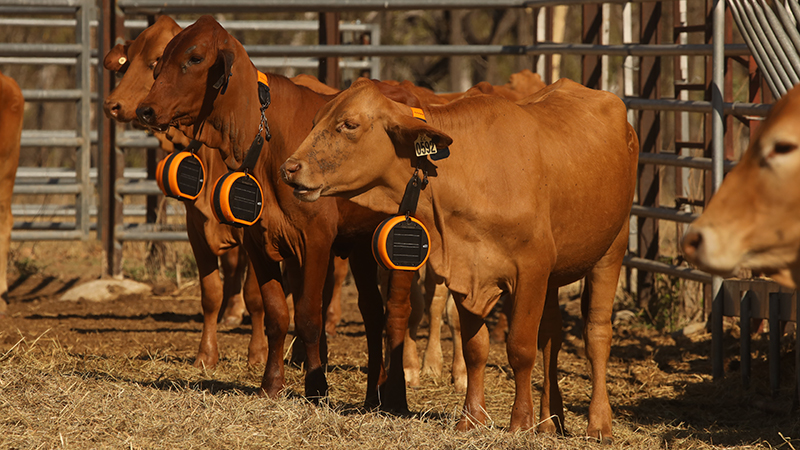Virtual fencing technology pushes the boundaries for graziers
Like much of remote Northern Australia, Spyglass has no mobile coverage, meaning virtual fencing systems requiring network access couldn’t be used as a tool for improving grazing efficiency, cattle production and land condition.
The trial of the Gallagher eShepherd Virtual Fencing System,would not be possible without the availability of satellite internet Starlink.
Two base station sites were selected to ensure maximum possible paddock coverage. These will use Starlink wifi to transmit the coordinates of a virtual paddock boundary to a herd of cattle fitted with solar powered, GPS enabled, eShepherd virtual fencing neckbands.
The herd will be monitored in real time using a desktop and mobile program, with virtual paddock boundaries instantly modified for a variety of purposes, such as lower-stress drafting, directing high-needs cattle class to better pasture, or protecting areas of land vulnerable to erosion.
The Starlink system comprises a pair of 200ah 12v lithium deep-cycle batteries, two 175w solar panels, and a monitoring system to check on battery and system performance. The system was designed to be able to handle persistent worst case scenario loads and environmental conditions over long periods.
It is hoped the trial will provide future users with a clear idea of minimum system requirements.

The Starlink connection is powered by a solar panel that recharges lithium batteries and drives the transmitter for the virtual fencing system.

Starlink base stations ready to go.
More to read on virtual fencing

Testing the virtual fence
A virtual fence is an invisible line in the landscape that can be created on a digital map using GPS technology.
READ MORE >>

What’s monitored
The trial will be monitored to ensure the technology and practices are effective and to ensure the trial is responsive and applicable to graziers.
READ MORE >>

Virtual fencing trial
NQ Dry Tropics will lead a trial into testing the efficacy of drought resilient grazing strategies in the Burdekin region.
READ MORE >>
